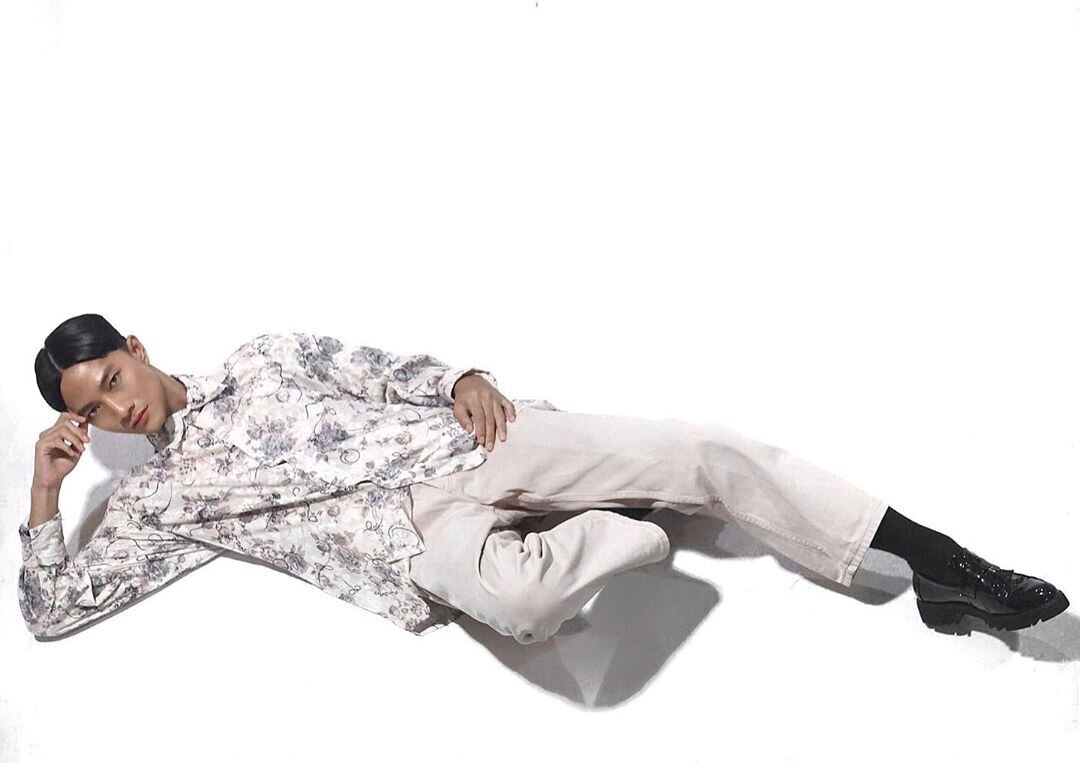How Indonesian androgynous models make it
Read in Indonesian
Image (left to right): Darell Ferhostan, Anast Lie and Ichsan Rindengan
Throughout the history of art, androgyny has always been considered an expression of beauty. However, oftentimes artists mistook the ambiguity of androgyny for the duality of hermaphrodite. This confusion might have been inherited to this day in understanding the concept of androgyny. Taking part in furthering the history of art, the fashion industry becomes an environment that accepts all gender expressions and the fluidity of it in the name of art.
Even in the ever-so-conventional Indonesia, we can see androgynous models walking and posing for high-end brands. Looking at how things are going today, we might forget that 10 years ago, androgynous model was not a thing in the Indonesian fashion industry. At that time, the androgynous models that we know today had to literally pave their way in the local fashion industry on their own.
Image courtesy of Darell Ferhostan
When Darell Ferhostan (@darellferhostan), 28, first started, there was no androgynous model around. Back in 2010, he had his first test shoot and from there, his journey as an androgynous model began. Since he didn’t fit in any modelling box back then, “I had to make my own box in the industry. It was hard, but possible.”
Back then, fashion models in Indonesia were strictly divided based on their gender. These fashion models also had to fulfill certain criteria. For example, they need to be a certain height, have a certain body type, etc. At the beginning of his career, even Darell wasn’t quite confident. “Male models are usually muscly, so I had my doubts.” Yet, in the end, he managed to make his own box to fit into.
He did not only open the chance for other models with similar characteristics, but also inspire them. Ichsan Rindengan (@ichsanrindengan), 27, for example, found that he was walking a similar path with his fellow androgynous models. When he started his modelling career, the stylist and photographer on his first test shoot told him that his looks fit the androgynous look.
“(They said) my face profile is not exactly masculine. Feminine styling works well on me too,” Ichsan recounted one of his earliest test-shoot experience animatedly. “There is a certain artistic value in looking ambiguous.”
Ichsan also specified that the being androgynous doesn’t necessarily mean that he looks like a woman. Being androgynous is more about the fact that he is capable to embody both the feminine and masculine qualities at once. Having this quality as a model has its own perks in the industry. It is certainly a unique selling point to have in a business that relies a lot on self-branding. However, Darell has an interesting take on this.
Image courtesy of Ichsan Rindengan
“I think androgynous has anything to do with physical or sexual, I think it’s about how you’re presenting yourself and behaving.” According to him, androgyny is a quality one just does not create. It comes naturally and nobody can build or direct anyone into embodying the genuine androgyny. “It’s something you’re born with.”
Image courtesy of Anast Lie
This is something Anast Lie (@anastliee), 29, might be able to relate to. At the beginning of her career, she was encouraged to do modelling by her family to get in touch with her feminine side more. She did manage to grow her hair out and did shows, until she had to do some gigs that require her to chop most of her hair off.
From there, it just happened that she got more gigs that require her to showcase her masculine quality. “I was never directed, everything just happened.”
For these models, being androgynous is a part of their nature. There is this notion of discomfort in not being one’s self and that discomfort is exactly what these models cannot relate to.
They are just being themselves and it happens that their working environments support their characters and their uniqueness. This kind of support that they’re getting led them to where they are today.
However, the world is not always that kind. Androgynous expression is oftentimes linked with controversial topics, such as LGBTQ. Anast did find this popular view on androgyny to be limiting. It limits how designers or brands make decisions on their muse and to choose the gender expressions for their products.
“The Indonesian fashion industry is pretty rigid on what they consider male and female, so fashion products that express the in-between is very limited due to the gatekeeping,” she summed up.
The rigidness might come from many things -from our custom, culture, or anything else-, but typecasting gatekeeps many from having modelling as a job. “When I’m talking about inclusivity, I’m not talking only about androgynous models; I’m also talking about models with certain heights, darker skin, certain body types, etc.”
Darell explained his views, “There is beauty in diversity.” He noticed how typecasting and the boxes that exist in the fashion industry to be limiting and, in the end, producing conformity in a supposedly creative industry.
Apparently, hope seems to be there, still. “In the last three years, the local fashion industry has begun to be more woke,” Ichsan pointed out. It appears that the fear to the unusual expression these androgynous models are performing has been overpowered by artistic visions and muses. Big names are not holding back from working with androgynous models as their muses. Stages and shoots began to open to many more different expressions and standards.
We might not be there yet, but it seems like the Indonesian fashion industry is indeed going somewhere and, hopefully, it is to a more open and inclusive direction.




